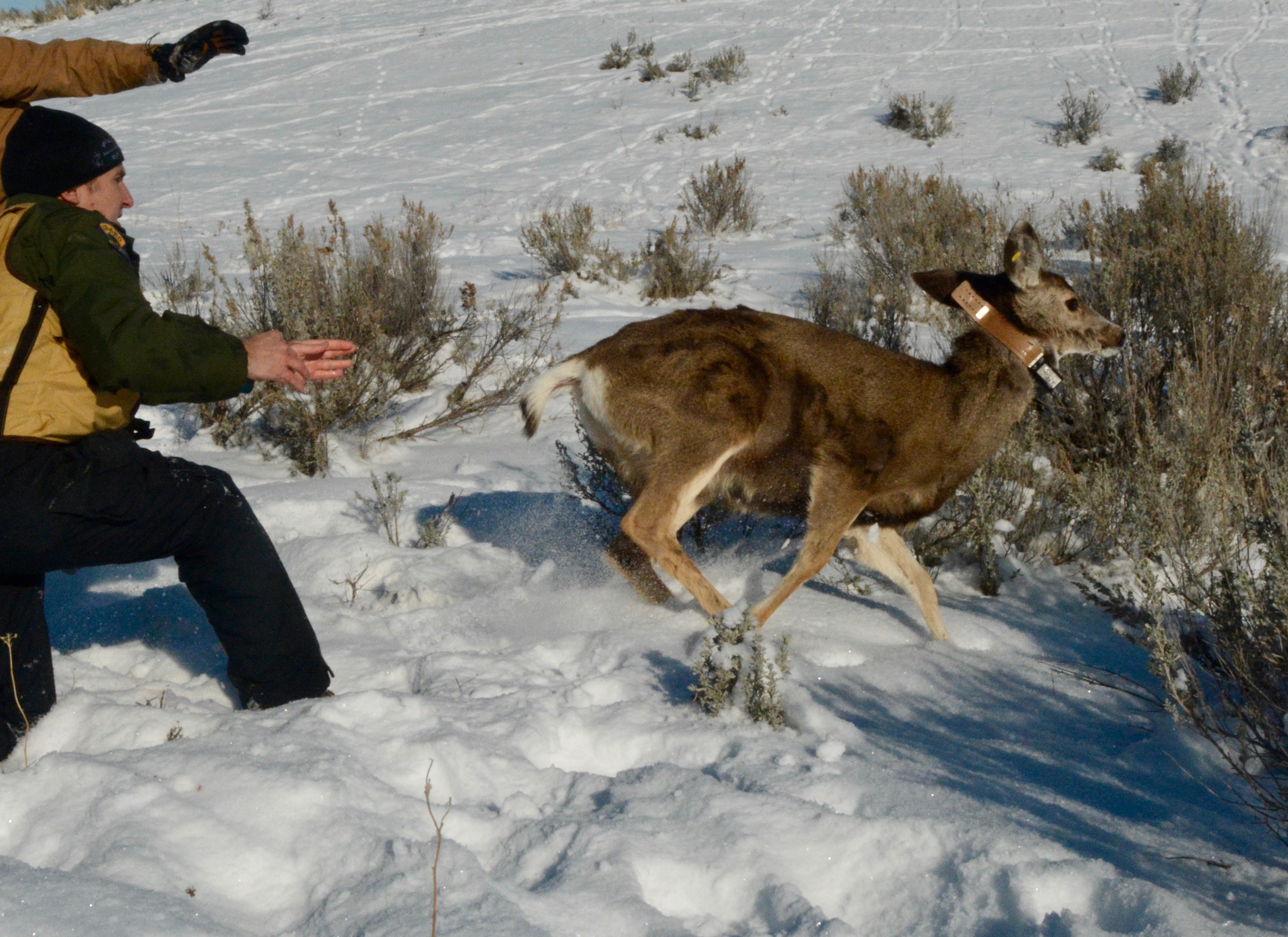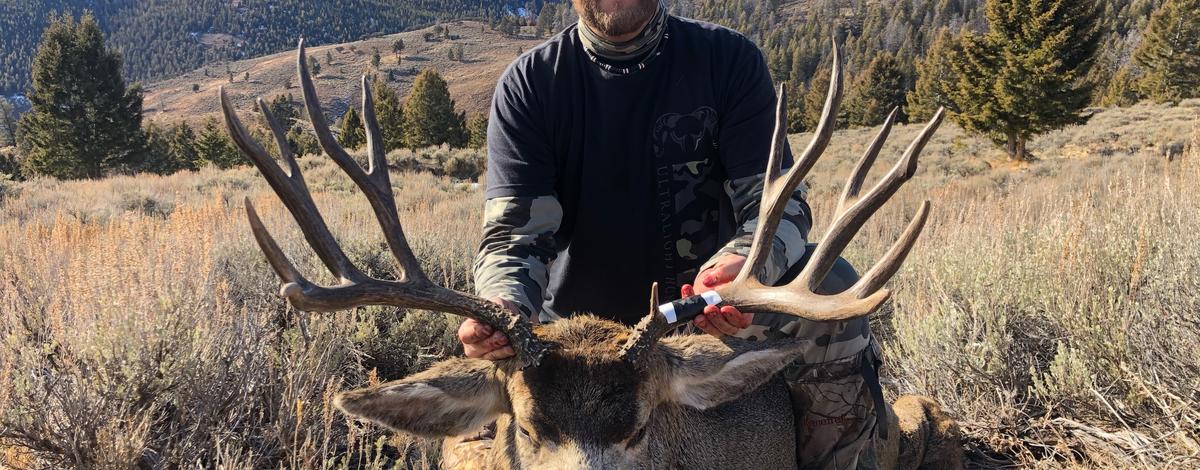The application period for fall 2022 deer, elk, pronghorn, fall black bear and fall turkey controlled hunts begins May 1 and runs through June 5. Successful controlled hunt applicants will be notified by July 10.
Hunters can also apply for the first Super Hunt drawing through May 31.
Hunters with a valid 2022 Idaho hunting license may apply for controlled hunts at any license vendor, Fish and Game office, or with a credit card online at license.gooutdoorsidaho.com or by calling 1-800-554-8685. There is an additional fee for online and phone orders.
Controlled hunts are a chance at some of Idaho’s best buck and bull hunts, antlerless hunts, extra hunting opportunity, or tags set aside for youth hunters. Hunters can research which controlled hunt is right for you in the 2022 Big Game Seasons and Rules booklet.
Controlled hunts typically have higher success rates than general hunts, fewer hunters in the field, and many hunters feel they have a better chance of harvesting a mature bull or buck during a controlled hunt. The trade off is controlled hunts typically limit where and when you can hunt, as opposed to a statewide general deer hunt or general season Elk Zone tag that typically includes several hunting units.
Here are some things that hunters should know for the 2022 controlled hunt application period:
- Some controlled hunts were eliminated for 2022 due to disease outbreak: The Fish and Game Commission removed several extra antlerless doe hunts in the Clearwater Region for 2022 due to loss of white-tailed deer from epizootic hemorrhagic disease.
- Chronic wasting disease was detected in Idaho for the first time in 2021: A total of six mule deer, white-tailed deer and elk tested positive in Unit 14. Fish and Game has mandated CWD testing for all deer and elk taken in Units 14 and 15 for 2022 and plans to increase testing in adjacent units.
- There's a five-day wait to buy capped Elk Zone tags: Residents who apply for a controlled elk hunt cannot buy a capped Elk Zone tag until five days after they go on sale, regardless of whether they draw a controlled hunt elk tag. Some controlled hunts are exempt from the waiting period, including extra elk hunts, depredation hunts, Landowner Appreciation Program hunts, or Super Hunts. See Big Game 2022 Seasons and Rules brochure for details.
- One-year wait for successful pronghorn applicants: Any person who drew a controlled pronghorn hunt in 2021 (including either sex or doe and fawn) is ineligible to apply in 2022 for any controlled pronghorn hunt. (See Page 108 of the big game rules booklet for exceptions.)
- Pronghorn archery hunts: Unlimited archery controlled hunts for pronghorn are first-choice only hunts. Fish and Game made the change in response to steadily increasing numbers of archery pronghorn hunters over the past 10 years and an effort to reduce hunter numbers in these controlled hunts.
2022 big game preview
It’s a little early to make predictions about the 2022 fall big game seasons, but hunters are likely to see noticeable changes both good and bad.
Last year's harvest data and winter survival monitoring of elk and mule deer herds, especially fawns and calves, provide a glimpse of what might happen in 2022 if harvests and survival continue on their current trajectory — at least from a statewide perspective.
Statewide, hunters had a slight drop in deer and elk harvests in 2021, but still near the 10-year averages. You can read more in a recap of the 2021 big game harvests. If trends continue, big game hunting in 2022 should trend with the 10-year average for harvest with normal fluctuations up or down due to weather, hunter numbers, and other factors.
Elk harvest dropped about 11 percent, but hunters still had a respectable statewide success rate of 23 percent and 42 percent for controlled elk hunts. Elk harvest remained over 20,000 for the eighth straight year, which is nearing a historic run of years with harvests above 20,000.
In many parts of the state, mule deer herds bounced back a bit from a series of tough winters in recent years. An average 2020-21 winter was reflected with an uptick in harvest. Hunters tagged 1,277 more mule deer in 2021 than in 2020, an increase of 5.1 percent, but mule deer harvest across the state was still about 8 percent below the 10-year average.
The 2021-22 winter was mild-to-normal depending on the region, followed by a fairly cool, wet spring, and fawn survival was tracking average to slightly above average for most of the state, which typically signals growing herds.
Statewide success rate for mule deer last fall was about 28 percent and nearly 50 percent for controlled hunt tags.
Whitetail harvest saw a significant drop after epizootic hemorrhagic disease swept through areas of the Clearwater Region and killed thousands of whitetails during summer, which was reflected in the overall whitetail harvest.
An estimated 54,223 hunters harvested a total of 21,418 white-tailed deer last year — a 13.8 percent drop from 2020. Despite that, success rates for whitetail hunters remained high at 39 percent statewide. Most whitetail hunting is during general hunts, but about 2,000 were killed during controlled hunts with a higher success rate of about 46 percent.

Fawn/calf winter survival
Fawn/calf survival was running average to slightly above average for most of spring, which coupled with normal winters over the last few years could help grow some herds, particularly mule deer herds.
Elk in general tend to be less susceptible to winter kill, so it's less of a factor in the overall size of the herds, but harsh winters can still affect calf survival.
You can read a full update on fawn and calf survival.
Hunters should keep in mind that things can still change before winter survival monitoring wraps up at the end of May. Threats to young animals trying to survive their first winter are not over because a cold, wet spring can still be fatal to fawns and calves even if snow has long since melted at lower elevations. For mule deer fawns in particular, biologists can see winter-related mortality as late as May.
Whitetails are unlikely to have a significant winter die-off this year, but some units in the Clearwater Region were hit hard by epizootic hemorrhagic disease, and it may take several years for those herds to recover. Idaho had several similar outbreaks in the past, and whitetail numbers typically recovered after a few years.
While this information gives hunters an idea of how herds are currently faring, and how hunters have recently fared statewide, Idaho is a large and geographically diverse state, so weather, winter survival and herd health can vary significantly depending on where you hunt.
Check the Hunt Planner
For controlled hunts, which are limited to a specific area, more specific information is required — and that’s where Fish and Game’s Hunt Planner comes in. The harvest stats for individual units and zones from the 2021 big game seasons, including both controlled hunts and general season hunts, are available on Fish and Game's website at idfg.idaho.gov/ifwis/huntplanner/.
Hunters can also find controlled hunt draw odds from recent years in the Hunt Planner. While the draw odds vary from year to year depending on the number of applicants, these statistics can give hunters a general idea of how much interest there is in a specific controlled hunt.
Video: How to submit a controlled hunt application
Super Hunt provides additional opportunities, deadline for first drawing is May 31
Hunters wanting more opportunities for the best tags available can apply for Idaho’s Super Hunts. Entries cost $6 each, and you can buy as many as you want. A Super Hunt tag allows the winner to hunt in any open unit for the species they drew – general or controlled hunts – for deer, elk, pronghorn and moose.
A Super Hunt tag gives you an extra chance to harvest an animal. If you draw a controlled hunt for deer, elk, or antelope, you can participate in the controlled hunt (or a general season hunt that you want to participate in) as well as the Super Hunt. This applies to moose hunts, as well, and you don’t have to buy a 2022 hunting license to apply for Super Hunts.

